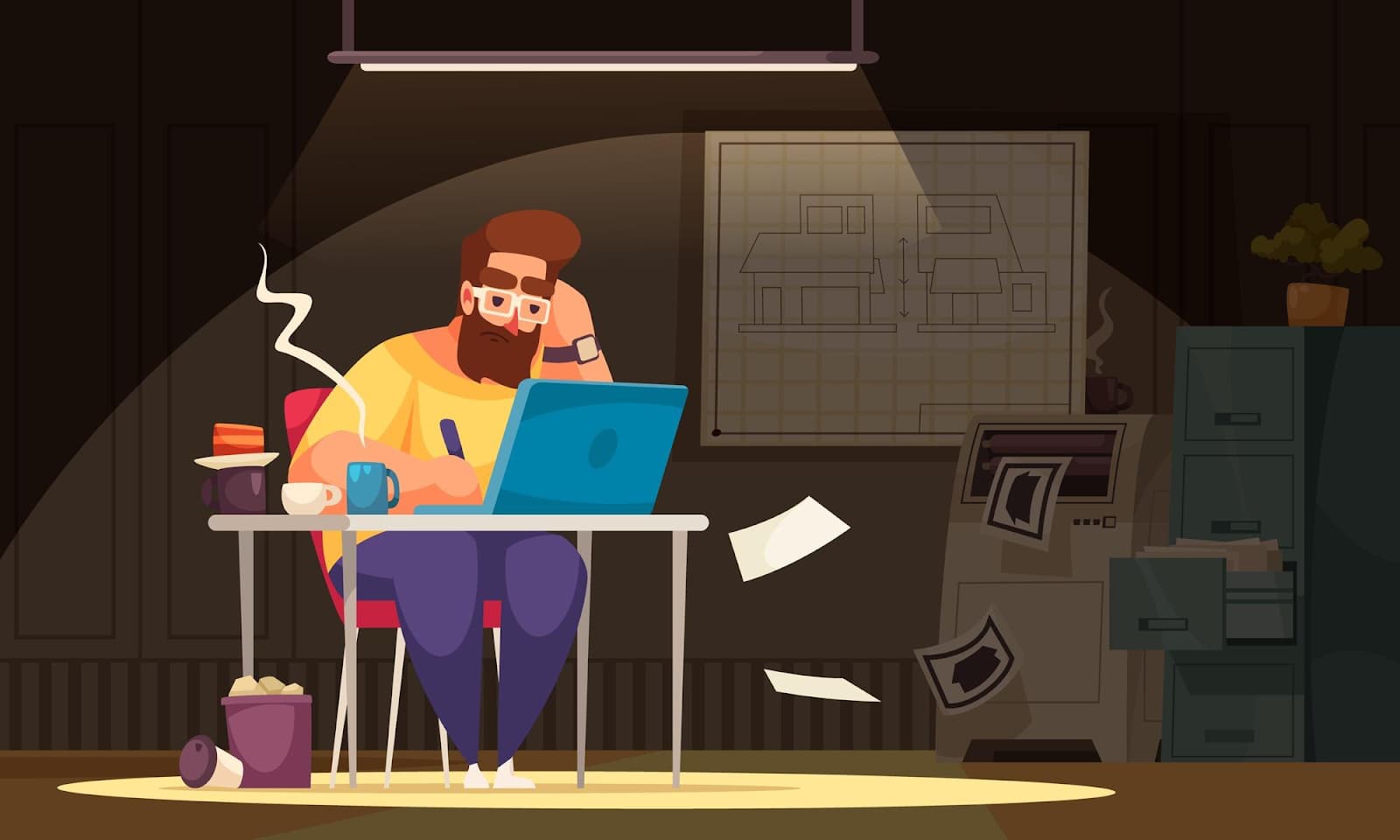Both techniques offer unique advantages and challenges, influencing everything from video games to advertising. Understanding the differences between these two-dimensional and three-dimensional worlds is essential for designers seeking to make informed creative choices. In this comprehensive guide, we’ll delve deep into the nuances of 2D and 3D graphics, exploring their respective strengths, weaknesses, and applications in modern design.
Understanding the Basics

To begin our exploration, let’s define the fundamental differences between 2D and 3D graphics. 2D graphics are flat, utilizing only two dimensions: width and height. They are commonly created using software like Adobe Photoshop or Illustrator, with images appearing on a single plane without depth or volume. On the other hand, 3D graphics incorporate an additional dimension, depth, allowing for the creation of objects with height, width, and depth. Software such as Blender or Autodesk Maya is often used to produce intricate 3D models and animations.
To begin our exploration of 2D versus 3D graphics, it’s essential to grasp the fundamental differences between these two approaches.
2D Graphics
2D graphics, as the name suggests, are two-dimensional, operating solely within the dimensions of width and height. This means that images, shapes, and text in 2D graphics exist on a flat surface without any depth or volume. Think of traditional drawings on paper or digital illustrations created in software like Adobe Photoshop or Illustrator. In 2D graphics, everything is represented on a single plane, with no perception of depth.
Key Characteristics of 2D Graphics:
- Flat: 2D graphics lack depth perception, appearing flat to the viewer;
- Width and Height: They operate within two dimensions, width, and height;
- Vector or Raster: 2D graphics can be created using vector-based or raster-based software;
- Simple: They are generally simpler to create and manipulate compared to 3D graphics;
- Versatile: 2D graphics find applications in various fields, including digital art, graphic design, and user interface design.
Examples of 2D Graphics:
- Logos and Icons: Many logos and icons are designed in 2D, utilizing simple shapes and colors;
- Illustrations: Digital illustrations, cartoons, and comic strips are often created using 2D graphics.
Buttons, menus, and other interface elements in software and websites are typically 2D.
3D Graphics

In contrast, 3D graphics add an extra dimension: depth. In addition to width and height, objects in 3D graphics also have depth, giving them volume and the illusion of space. This allows for the creation of complex, three-dimensional scenes and objects that can be rotated and viewed from multiple angles. Software like Blender, Autodesk Maya, and Cinema 4D are commonly used for creating 3D models and animations.
Key Characteristics of 3D Graphics:
- Depth: 3D graphics incorporate depth perception, adding a third dimension to objects;
- Width, Height, and Depth: They operate within three dimensions, including width, height, and depth;
- Complex: Creating 3D graphics requires additional skills and understanding of 3D modeling, texturing, and rendering;
- Realistic: 3D graphics can create lifelike simulations and environments with realistic lighting and textures;
- Immersive: They are often used in video games, movies, and virtual reality experiences to create immersive worlds.
Examples of 3D Graphics:
- Video Games: Many modern video games feature 3D graphics, allowing players to explore detailed, immersive environments;
- Animated Films: Animated movies like Pixar’s Toy Story or DreamWorks’ Shrek rely on 3D graphics to bring characters and worlds to life;
- Architectural Visualizations: Architects and designers use 3D graphics to create realistic renderings of buildings and interior spaces.
In summary, the primary difference between 2D and 3D graphics lies in the dimensionality of the images. While 2D graphics are flat and operate within two dimensions, 3D graphics add depth perception, allowing for the creation of complex three-dimensional scenes and objects. Each approach has its own strengths and applications, and understanding these differences is crucial for designers looking to leverage the right tools for their projects.
Applications in Design
.Now that we’ve covered the basics of 2D and 3D graphics, let’s delve into their respective applications in design. Both techniques offer unique advantages and are employed across various creative fields, each catering to different design needs and objectives.
2D Graphics Applications:
- Illustration and Graphic Design. 2D graphics are widely used in illustration and graphic design to create digital artwork, logos, posters, and advertisements. Designers leverage software like Adobe Photoshop, Illustrator, and Affinity Designer to craft visually appealing compositions using shapes, colors, and typography;
- User Interface (UI) Design. In the realm of user interface design, 2D graphics play a crucial role in creating intuitive and visually appealing interfaces for websites, mobile apps, and software applications. UI elements such as buttons, icons, menus, and navigation bars are often designed in 2D to ensure clarity and ease of use for the end user;
- Animation and Motion Graphics. While 3D animation is prevalent in movies and video games, 2D animation remains a popular choice for animated shorts, explainer videos, and motion graphics. Software like Adobe After Effects and Toon Boom Harmony enables designers to bring characters and graphics to life through frame-by-frame animation or vector-based animation techniques;
- Print Media. In print media, such as magazines, newspapers, and books, 2D graphics are used extensively for illustrations, diagrams, infographics, and layouts. Designers leverage the flexibility of 2D software to create visually engaging content tailored to specific print formats and audience demographics;
- Web Design and Digital Marketing. From website banners to social media graphics, 2D graphics are omnipresent in digital marketing efforts. Designers utilize 2D visuals to communicate brand messages, promote products, and engage audiences across various online platforms. Tools like Canva and Adobe Spark offer user-friendly interfaces for creating professional-quality 2D graphics for digital marketing campaigns.
3D Graphics Applications:
- Architectural Visualization. Architects and interior designers utilize 3D graphics to create realistic renderings and visualizations of buildings, interiors, and urban landscapes. 3D modeling software like Autodesk Revit and SketchUp enables designers to create accurate representations of architectural designs, helping clients visualize projects before construction begins;
- Product Design and Prototyping. In product design, 3D graphics play a vital role in prototyping and visualization. Designers use 3D modeling software to create detailed digital prototypes of products, allowing for thorough testing and refinement before physical production. This iterative design process helps streamline product development and reduce time-to-market;
- Film and Animation. The entertainment industry heavily relies on 3D graphics for creating visually stunning films, animated features, and visual effects. Studios like Pixar, Disney, and Industrial Light & Magic utilize advanced 3D animation software such as Autodesk Maya and Blender to produce lifelike characters, immersive environments, and breathtaking special effects;
- Video Games. 3D graphics are integral to the development of modern video games, enabling developers to create immersive gaming experiences with realistic environments, characters, and animations. Game engines like Unity and Unreal Engine provide robust tools for designing, prototyping, and optimizing 3D graphics for various gaming platforms;
- Virtual Reality (VR) and Augmented Reality (AR):. In the realm of immersive technologies, 3D graphics are indispensable for creating immersive virtual reality experiences and interactive augmented reality applications. From architectural walkthroughs to educational simulations, 3D graphics enable users to engage with digital content in unprecedented ways, blurring the lines between the virtual and physical worlds.
In conclusion, both 2D and 3D graphics offer diverse applications across a wide range of design disciplines. While 2D graphics excel in illustration, user interface design, and digital marketing, 3D graphics are indispensable for architectural visualization, product design, film production, video games, and immersive technologies like virtual reality and augmented reality. By understanding the strengths and applications of each technique, designers can leverage the right tools to bring their creative visions to life effectively.
Advantages of 2D Graphics
2D graphics offer a range of benefits that make them indispensable in various design contexts. Here are some key advantages of utilizing 2D graphics:
- Simplicity. One of the primary advantages of 2D graphics is their simplicity. Compared to 3D graphics, which require additional dimensions and complexity, 2D graphics operate within a two-dimensional space, making them easier to create and manipulate. This simplicity is especially advantageous for designers who prioritize efficiency and ease of use in their workflows;
- Versatility. 2D graphics are incredibly versatile and can be applied to a wide range of design projects and mediums. Whether it’s creating illustrations, logos, user interfaces, or animations, 2D graphics offer flexibility and adaptability to suit various design needs. Designers can leverage 2D graphics across print media, digital platforms, and multimedia presentations with ease;
- Accessibility. Another advantage of 2D graphics is their accessibility. With the proliferation of graphic design software and online resources, creating 2D graphics has become more accessible than ever before. Designers of all skill levels can utilize user-friendly tools like Adobe Photoshop, Illustrator, and Canva to create professional-quality graphics without extensive training or expertise;
- Speed and Efficiency. Due to their simplicity and straightforward nature, 2D graphics are often quicker to create and iterate upon compared to 3D graphics. Designers can sketch ideas, make revisions, and finalize designs rapidly, making 2D graphics ideal for projects with tight deadlines or iterative design processes. Additionally, the lightweight nature of 2D graphics makes them easy to share, distribute, and display across various platforms;
- File Size and Performance. 2D graphics typically have smaller file sizes compared to their 3D counterparts, making them more suitable for applications where bandwidth and storage space are limited. This is particularly advantageous in web design, mobile app development, and digital marketing, where optimizing file sizes and loading times is essential for user experience and performance;
- Retro Aesthetic. The flat, minimalist aesthetic of 2D graphics has seen a resurgence in popularity in recent years, driven by trends in graphic design and nostalgia for retro aesthetics. From vintage-inspired illustrations to pixel art and retro video game graphics, 2D visuals evoke a sense of charm and authenticity that resonates with audiences across various demographics.
In summary, 2D graphics offer a range of advantages, including simplicity, versatility, accessibility, speed and efficiency, smaller file sizes, and a retro aesthetic. By leveraging these strengths, designers can create compelling visuals that effectively communicate their messages and captivate audiences across different mediums and platforms.
Advantages of 3D Graphics
3D graphics offer a multitude of advantages that make them indispensable in numerous design disciplines. Here are some key advantages of utilizing 3D graphics:
- Realism and Depth. One of the most significant advantages of 3D graphics is their ability to create realistic representations of objects, environments, and characters. By incorporating depth perception, 3D graphics simulate the three-dimensional world more accurately, allowing for lifelike simulations and immersive experiences. This realism is particularly valuable in industries such as architecture, product design, film production, and video games, where visual fidelity is paramount;
- Flexibility and Creative Freedom. 3D graphics provide designers with unparalleled flexibility and creative freedom to explore and experiment with various forms, shapes, and textures. With 3D modeling software, designers can manipulate virtual objects in three dimensions, allowing for precise control over every aspect of the design. This flexibility enables designers to push the boundaries of creativity and innovation, resulting in visually stunning and imaginative creations;
- Dynamic Animations and Interactivity. Unlike static 2D graphics, 3D graphics are dynamic and interactive, capable of fluid animations, simulations, and real-time interactions. Whether it’s animating characters, simulating physics-based interactions, or creating interactive virtual environments, 3D graphics enable designers to engage audiences in compelling and immersive experiences. This interactivity is particularly valuable in fields such as gaming, virtual reality, and augmented reality, where user engagement is paramount;
- Accurate Visualization and Prototyping. In fields like architecture, product design, and engineering, 3D graphics play a crucial role in accurate visualization and prototyping. Designers can create detailed 3D models of buildings, products, and prototypes, allowing stakeholders to visualize and evaluate designs more effectively. By accurately representing spatial relationships and scale, 3D graphics help streamline the design process, reduce errors, and facilitate better decision-making;
- Photorealistic Rendering. Advances in rendering technology have enabled the creation of photorealistic 3D graphics that closely mimic the appearance of real-world objects and environments. High-quality rendering techniques such as ray tracing and global illumination produce stunning visuals with realistic lighting, reflections, and textures. This level of visual fidelity is invaluable in industries such as film production, advertising, and architectural visualization, where aesthetics are paramount;
- Branding and Marketing Impact. 3D graphics can significantly enhance the branding and marketing efforts of businesses and organizations. Whether it’s creating product visualizations, promotional videos, or immersive marketing experiences, 3D graphics help capture audience attention and leave a lasting impression. The ability to showcase products and concepts in 3D allows brands to differentiate themselves and communicate their value proposition effectively.
In summary, 3D graphics offer a range of advantages, including realism and depth, flexibility and creative freedom, dynamic animations and interactivity, accurate visualization and prototyping, photorealistic rendering, and branding and marketing impact. By leveraging these strengths, designers can create compelling visuals and immersive experiences that captivate audiences and drive engagement across various industries and applications.
Challenges and Considerations
While 3D graphics offer numerous advantages, they also come with unique challenges and considerations that designers must navigate. Here are some key challenges associated with 3D graphics:
- Complexity and Learning Curve. 3D graphics software can be complex and require a steep learning curve, especially for beginners. Mastering 3D modeling, texturing, lighting, and animation techniques requires time, dedication, and a solid understanding of the underlying principles. Designers may encounter challenges in grasping advanced concepts and navigating the intricate interfaces of 3D software;
- Hardware and Software Requirements. Creating and rendering high-quality 3D graphics often requires powerful hardware and specialized software. Designers may need high-performance computers with dedicated graphics cards, ample RAM, and fast processors to handle complex 3D models and rendering tasks efficiently. Additionally, professional-grade 3D software can be expensive and may require subscription-based licensing models, posing financial barriers for some designers;
- Rendering Time and Resources. Rendering realistic 3D scenes and animations can be time-consuming and resource-intensive. Complex scenes with detailed textures, lighting effects, and simulations may require hours or even days to render, depending on the hardware specifications and rendering settings. Designers must carefully optimize their workflows and prioritize rendering tasks to meet project deadlines and resource constraints;
- Optimization and File Size. Large and complex 3D models can result in bulky file sizes, posing challenges for storage, distribution, and real-time performance. Designers must optimize their 3D assets by reducing polygon counts, optimizing textures, and utilizing efficient compression techniques to minimize file sizes without sacrificing visual quality. This optimization process requires careful consideration and may involve trade-offs between fidelity and performance;
- Compatibility and Interoperability. Collaborating on 3D projects can be challenging due to compatibility issues and interoperability limitations between different software platforms and file formats. Designers may encounter difficulties when sharing 3D assets with clients, collaborators, or stakeholders who use different software or operating systems. Ensuring seamless interoperability and file compatibility requires careful planning and communication throughout the design process;
- Artistic and Technical Skills. Creating compelling 3D graphics requires a combination of artistic creativity and technical proficiency. Designers must possess strong skills in visual composition, lighting, shading, and animation, as well as proficiency in using 3D modeling software and rendering engines. Developing these skills requires continuous practice, experimentation, and ongoing learning to stay abreast of advancements in 3D technology and techniques.
In summary, while 3D graphics offer tremendous creative potential and opportunities for innovation, they also present significant challenges and considerations for designers. Navigating the complexities of 3D graphics requires a combination of technical expertise, artistic vision, and problem-solving skills. By addressing these challenges thoughtfully and strategically, designers can harness the full potential of 3D graphics to create captivating visuals and immersive experiences across various industries and applications.
Conclusion
In conclusion, the debate between 2D and 3D graphics is not a matter of one being superior to the other, but rather a question of suitability for the task at hand. Both techniques offer distinct advantages and challenges, and the choice between them ultimately depends on the specific requirements of the project and the creative vision of the designer. By understanding the strengths and weaknesses of 2D and 3D graphics, designers can make informed decisions to create compelling visual experiences that resonate with audiences across various mediums.



